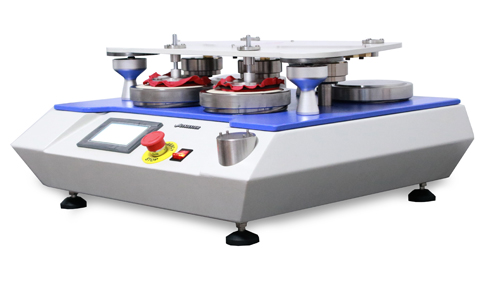 +86 152 6060 5085
+86 152 6060 5085
 +86 152 6060 5085
+86 152 6060 5085
Blog
Catalog
Latest Blog
The Martindale testing machine is a testing instrument used to evaluate the properties of textiles such as tensile breaking and abrasion resistance. Specific applications include the following aspects:
1. Determine the tensile strength and elongation at break of the textile. The Martindale testing machine can measure the maximum tensile force and elongation at break of materials to help evaluate the strength and tensile properties of materials.
2. Evaluate the abrasion properties of textiles. The Martindale testing machine can simulate different types of friction conditions, such as dry friction, wet friction and fatigue friction, to evaluate the wear resistance of materials.
3. Test the surface roughness and coefficient of friction of textiles. Martindale testing machines can measure the coefficient of friction and surface roughness of textile surfaces, parameters that are critical to the durability and performance of textiles.
4. Analyze the tensile, tearing and abrasion behavior of textiles. By performing various experiments on textiles such as tensile, tearing and abrasion on the Martindale testing machine, we can fully understand the mechanical behavior and wear mechanism of textiles.
The Textile Martindale Tester is a piece of equipment commonly used to evaluate the dyeability of fibers, yarns and fabrics. Its main features include:
1. Fully automatic control system, easy to operate, stable and reliable.
2. It can test the dyeing speed of different materials and dyes.
3. Can test the dyeing performance of multiple dyes at the same time.
4. It can simulate the dyeing conditions of the actual production environment.
5. It can test the color fastness and dyeing uniformity of the sample.
Experiments using a textile Martindale testing machine usually require the following steps:
1. Prepare samples: Cut or trim the fibers, yarns or fabrics to be tested as required to ensure that the samples are consistent in size and shape.
2. Prepare the dye: prepare the dye solution according to the requirements of the dye manufacturer.
3. Adjustment conditions: Set dyeing time, temperature, pH and other conditions according to the experimental requirements.
4. Install the sample: put the sample into the dyeing cylinder, and inject the dye solution into the dyeing cylinder as required.
5. Operate the experimental machine: Put the dyeing cylinder into the experimental machine, set the experimental conditions and start running.
6. Stop the experiment: After the dyeing time is up, stop the experiment. Remove the sample from the dyeing cylinder and rinse with water.
7. Evaluation results: Evaluate various indicators such as fastness of dyeing, color fastness and dyeing uniformity of the sample according to the dyeing effect.

Email: hello@utstesters.com
Direct: + 86 152 6060 5085
Tel: +86-596-7686689
Web: www.utstesters.com